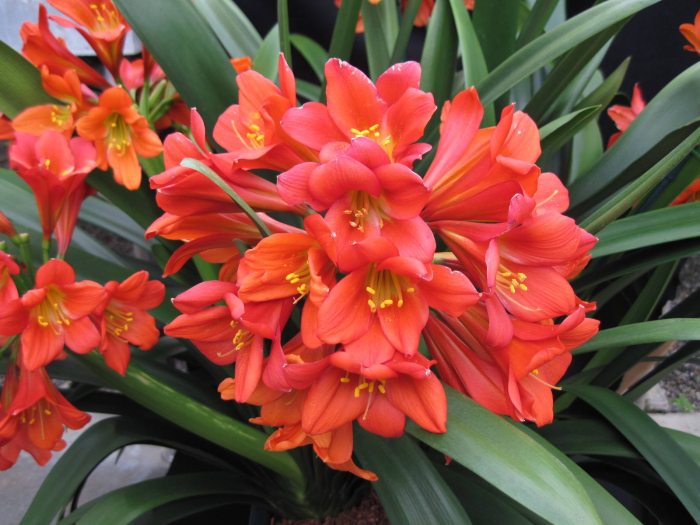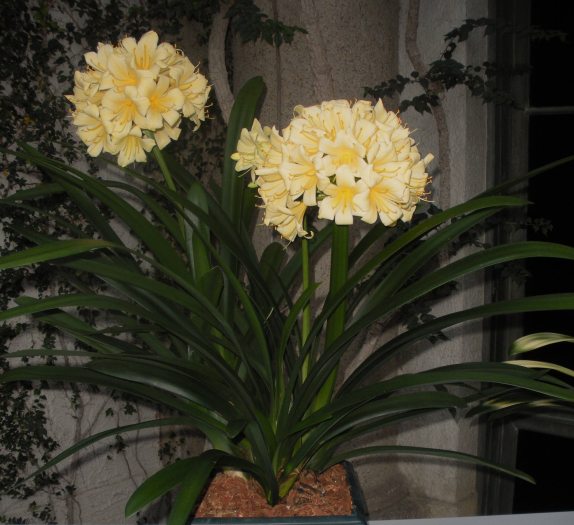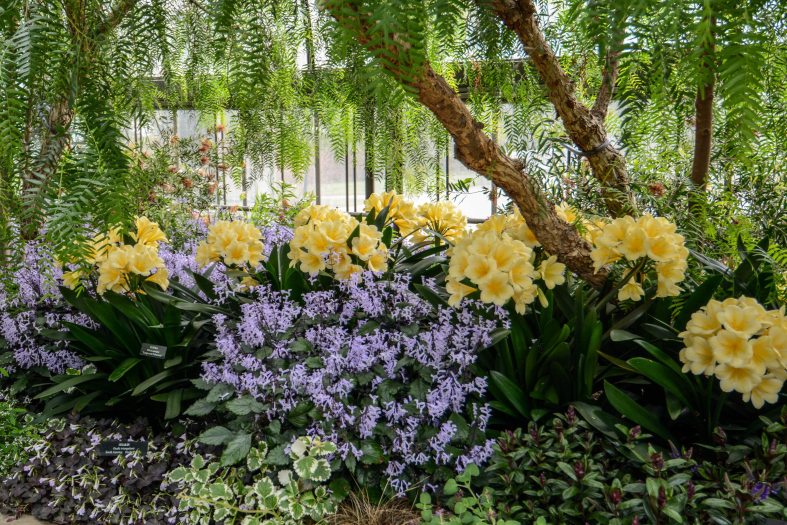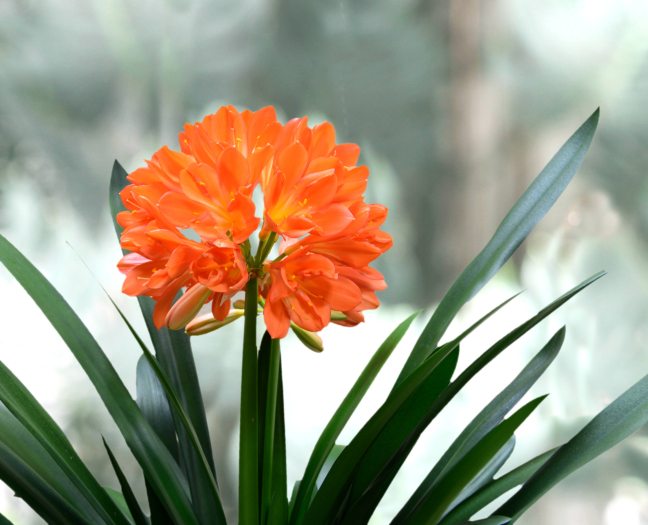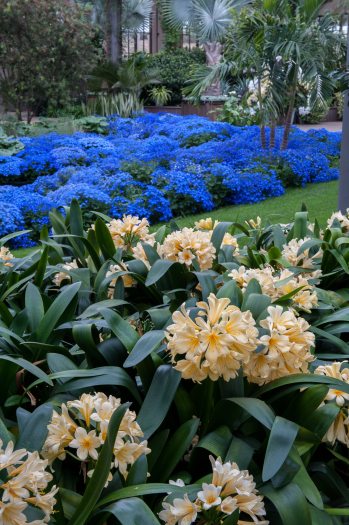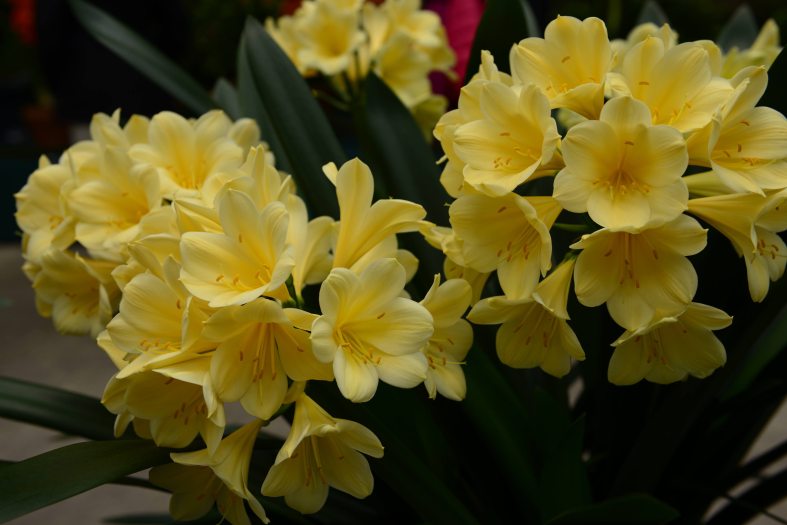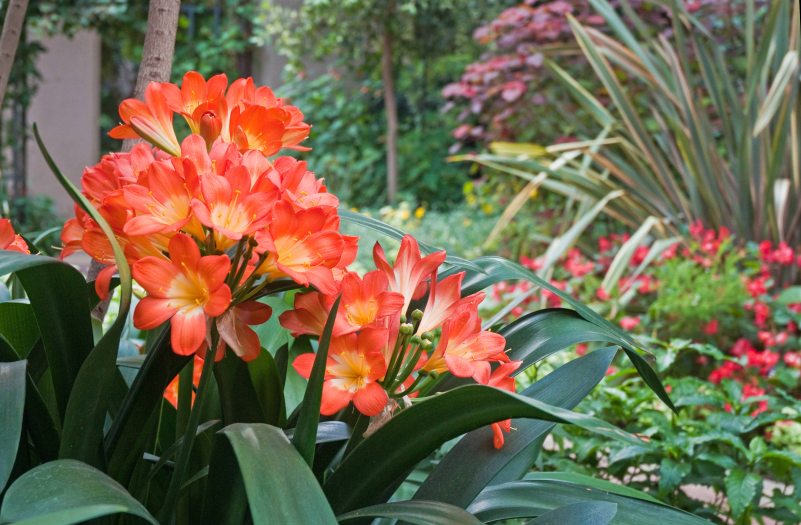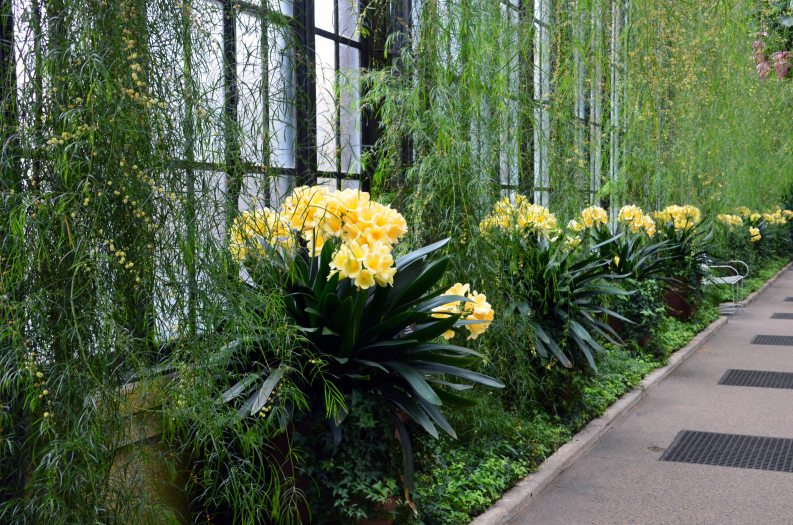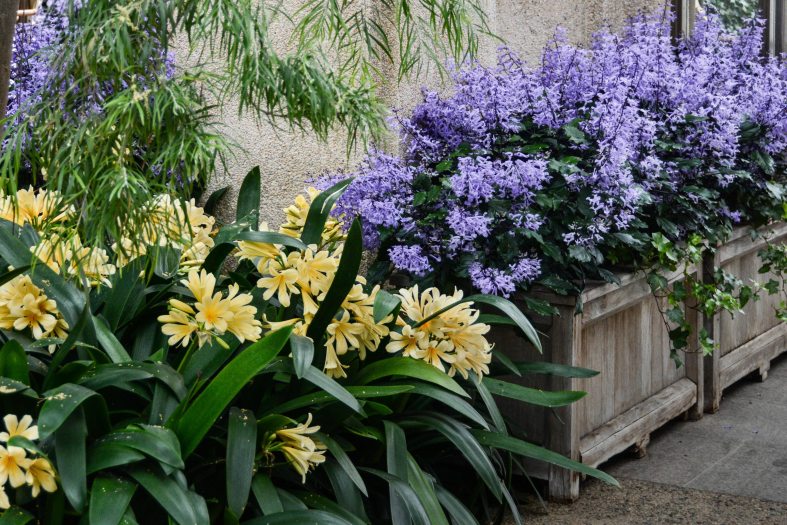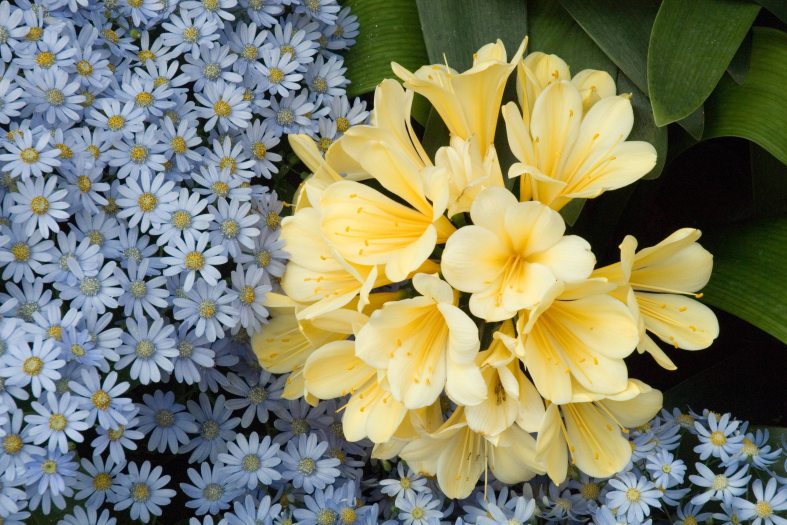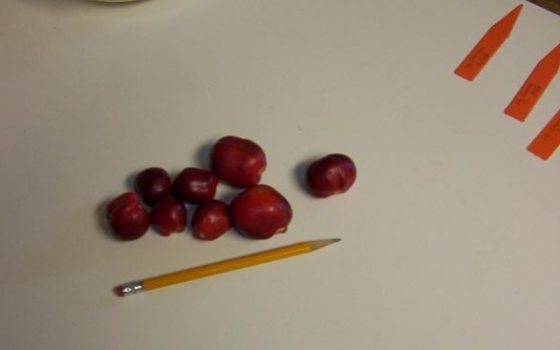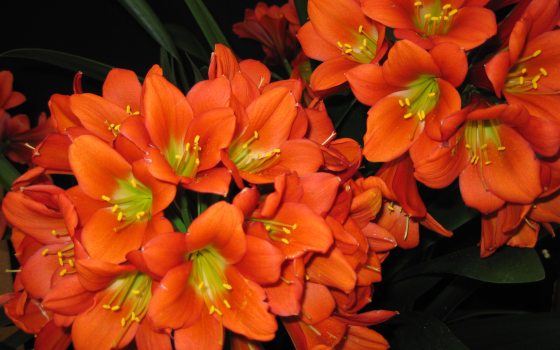Clivia is a key part of our indoor display, with beautiful blossoms adding sweeps of color to our East Conservatory from late winter into spring. A member of the Amaryllis family, it is known for its large umbels of orange, yellow, red, or even green flowers that stand above shiny deep-green or variegated strap-like foliage.
Anyone growing clivia knows that patience is needed for success. Clivia require four to six years from seed to first flower, and will then flower each successive year. A seedling’s first flowers don’t usually reflect the plant's true potential, which cannot be evaluated until the second or third flowering cycle.
Clivia make a great container house plant, thriving under low light conditions. But did you know that they require a chilling period for proper blooming? Check out our blog for more tips on growing clivia, and enjoy for yourself the beautiful blooms that you’ve admired in our Gardens.

